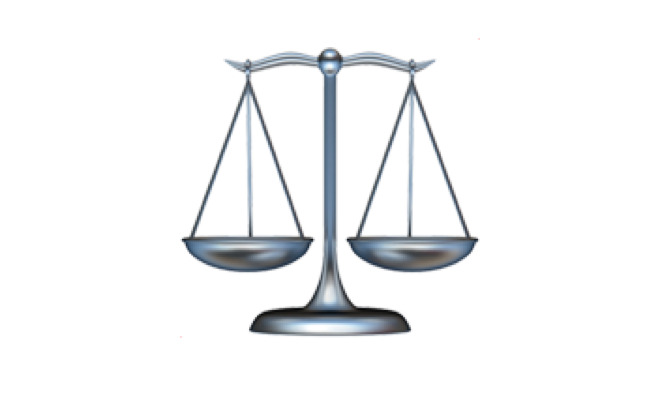The increase in the use of emoji in daily life is reportedly causing issues for the United States legal system, with courts slowly coming to terms with the how to interpret the iconography in evidence and its appearance in other court filings.
Emoji has become a staple of messaging apps and services around the world, with the icon-based communications system also being used in other areas, including video, commercials, and even in TV shows. While the world has been quick to embrace the colorful messaging symbols, the slow-moving US justice system is glacial in comparison, and is having trouble handling their appearance in a variety of ways.
"Emojis show up in virtually every practice area because emojis are showing up across all types of online communications," Santa Clara University law professor Eric Goldman told The Recorder. "Emojis show up most frequently in cases where online chatter is a key source of evidence."
Goldman notes the most common cases they appear in are those involving sexual predation, where they are used for flirting and sexual banter, "often a form of victim grooming." Emoji also feature frequently in employment discrimination cases, for similar reasons.
While the number of court opinions referencing emojis is seeing exponential growth, with approximately 30 percent of the all-time number of opinion references to the emoticons reached in 2018, the usage of them in opinions is far lower than would be expected.
"Opinions routinely omit the emojis altogether, or the judge imprecisely characterizes the emojis in evidence," Goldman claims, with legal research services Westlaw and Lexis typically not displaying emoji. As neither database allows for specific emoji to be searched for in court opinions, Goldman suggests "the court publication process remains woefully under-prepared" for the continuing rise of their use.
The difference in emoji styling across platforms is also thought to be the cause of some lawsuits, despite attempts by Apple, Google, and others to harmonize what is depicted in each. One study referenced by Goldman notes at least 25 percent of respondents "were unaware that the emoji they posted could appear differently to their followers," and in cases where they were shown how a tweet of theirs was rendered across multiple platforms, one in five people said they would have edited or not sent the tweet at all had they known about the differences.
"Those 'regretful tweets' should make lawyers some good money," Goldman adds.
The meaning of individual emoji, or those in groups, is also subject to interpretation by the courts, but they also present unique challenges. Their small size and the fact many emoji look similar makes it easy for a reader to misinterpret the intended meaning from the sender's message.
Similar to regional and community dialects, emoji can develop platform-specific dialects. As an example, Goldman refers to how eggplants and peaches were interpreted sexually because of how Apple depicted each item, but it took a long time before users of other platforms understood their Apple-specific meanings due to appearing differently elsewhere.
This also leads to an issue where an emoji that has the same accepted meaning on multiple platforms could be misinterpreted because of the graphical style. While Android users may see the "grinning face with smiling eyes emoji" and understand it as being "blissfully happy," Goldman suggests iOS users instead interpreted the symbol as "ready to fight," and could take it as an intention to be violent.
"Determining how to apportion liability when both parties make reasonable but different interpretations of the same symbol will lead to many unhappy outcomes," the processor adds.
Goldman advises to judges that they ensure lawyers represent the exact depictions of emoji that their clients saw, as it would be a mistake to assume both parties saw the same imagery. Courts should also make sure the "fact-finder" sees the actual emojis in use to determine their direct meanings, and for the oral characterization of emojis to be prevented in read testimony. Lastly, Goldman advises judges should display the emojis in court opinions, and though Westlaw and Lexis have trouble interpreting them, they should still appear normally in court opinion PDFs.
While courts have work on their hands to refresh their practices regarding emojis, Goldman warns things will get more complicated as technology advances. The use of animated emojis, Apple's Animoji, and Samsung's AR emojis pose "even more challenges for courts to interpret," and will force lawyers to become more familiar with messaging platforms in order to fully understand their cases.
The number of emoji is anticipated to rise later this year, after the Unicode Consortium finalized 230 new emoji that is being added to the roster. It is expected that Apple will incorporate the symbols as part of "iOS 13" and "macOS 10.15" updates later this year.
 Malcolm Owen
Malcolm Owen







-m.jpg)






 Amber Neely
Amber Neely
 Mike Wuerthele
Mike Wuerthele
 William Gallagher
William Gallagher


 Andrew Orr
Andrew Orr
 Wesley Hilliard
Wesley Hilliard









20 Comments
Pretty easy to interpret the big purple eggplant emoji 🍆
Or users can ask what the other meant with the emoji and leave lawyers out of it.
Bet they will interpret everything against you.
Sarcasm? Feminists will love this!